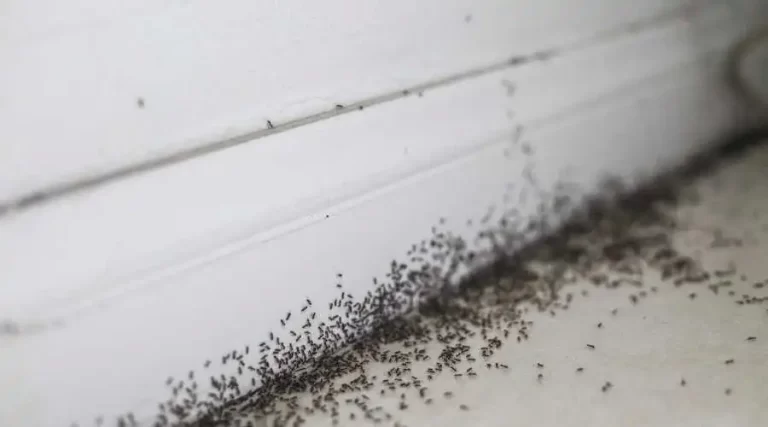If you live in California, you might have noticed a sudden rise in the amount of ants crawling all over the place. This is due to the fact that these insects have emerged as one of California’s most prevalent pests. While this might not raise any red flags for some people, it can be rather scary for others. Should you be concerned about an infestation then? We’ll look at the kinds of ants that are frequently seen in California in this blog post, as well as what you can do if you suspect you could have an infestation.
How Harmful Are Ants To Your House?
What kind of damage can ants actually cause to your property is one of the most often asked inquiries we receive. The short answer is: a good deal.
Ants are first and foremost capable of harming your property. They can chew through wood, plastic, and even metal, which explains why. So, depending on the species, you can experience some serious damage if you have any wooden constructions on your land, like a fence or a deck. Ants can also contaminate your food, in addition. This is due to the fact that before entering your home, they frequently pass past trash and other unclean areas. They can consequently spread bacteria and illnesses onto your meals, which can make you ill. Finally, ants may simply be an annoyance in general. Unexpectedly, these pests have a keen sense of smell, so they can locate any crumbs that are left behind. Because ants are a food source for other pests like cockroaches, spiders, rats, and others, if you have an infestation you’ll probably get some company.
Common Ant Species
Numerous ant species can live happily in California due to the state’s favorable environment and weather. This is accurate, and it also results in issues with ants seeking to get inside your house in search of food, water, and shelter. The most typical ants you could encounter trying to enter your house include:
Brazilian Ant
One of the most prevalent species in California is the Argentine ant. These ants are tiny, measuring only 1/8 of an inch long. They have a smooth body and are light brown or reddish-brown in appearance. Argentine ants often have numerous workers in huge colonies. They construct their outside nests behind rocks, logs, or other ground-based things. They build their nests indoors in voids in walls, crawl spaces, or other secret places. The musty smell these pests emit when crushed is a typical indicator that you have them in your home. The likelihood that Argentine ants will devour any food crumb that has fallen is high because they are drawn to sweet foods, meat, and other insects. Get rid of grass and plants near your home, caulk all openings in your home, and store foods, particularly sweet ones, in sealed containers if you want to get rid of Argentine ants.
Ant Carpenter
In California, carpenter ants are regarded as the most damaging species. These bugs are 3/8 to 1/2 inch long, black or dark brown, and colored. Carpenter ants receive their name from the fact that they create their nests by hollowing out wood, which, if left unchecked, can seriously harm your property. Carpenter ants will build their nests in live trees if they can get inside, but they usually do it in dead trees or stumps that are outside. Once they’ve gained access to your house, they may establish themselves wherever, such as:
- Wall gaps
- Enter crevices
- Attics
- Cabinet backs
- Underneath floors
Carpenter ants can cause internal building damage comparable to termites if you have an infestation and don’t plan to cure it right away. Eliminating scent trails by cleaning your home with dish soap and essential oils, destroying their nests with boric acid, and closing any entry ways can all help to stop an infestation.
Robber Ants
About one-sixteenth of an inch long, grease ants, sometimes known as thief ants, are tiny. Their propensity of collecting food from other ants and bringing it back to their own nests gives them their name. Thief ants have a thin waist and are pale brown or yellowish in hue. A little bit darker than the rest of their bodies are their abdomens. A little stinger could be visible on the end of their abdomens if you look closely. Large colonies of thief ants, which can number up to 300,000 individuals, are where they live. Multiple queens, each of which can lay up to 40 eggs each day, can exist in a single colony. In two weeks, the eggs hatch into larvae. Before the larvae become adults and start looking for food, they go through a number of molts. Because of their size and propensity to search for any indication of food, this species is frequently mistaken for pharaoh ants. If you wish to eradicate a thief ant infestation, start by inspecting all locations where ant activity is frequent (even close to other ant nests) and installing bait stations to identify the source of the infestation. You’ll be able to take appropriate action after finding the nest.
Still Having Ant Problems?
If you have exhausted all of the numerous DIY remedies and are still unable to get rid of these pests, look into the our expert ant control services. Since our exterminators have been providing services in California for over 60 years, we are likely to have encountered anything similar and be able to assist you with any infestation you may be experiencing.

